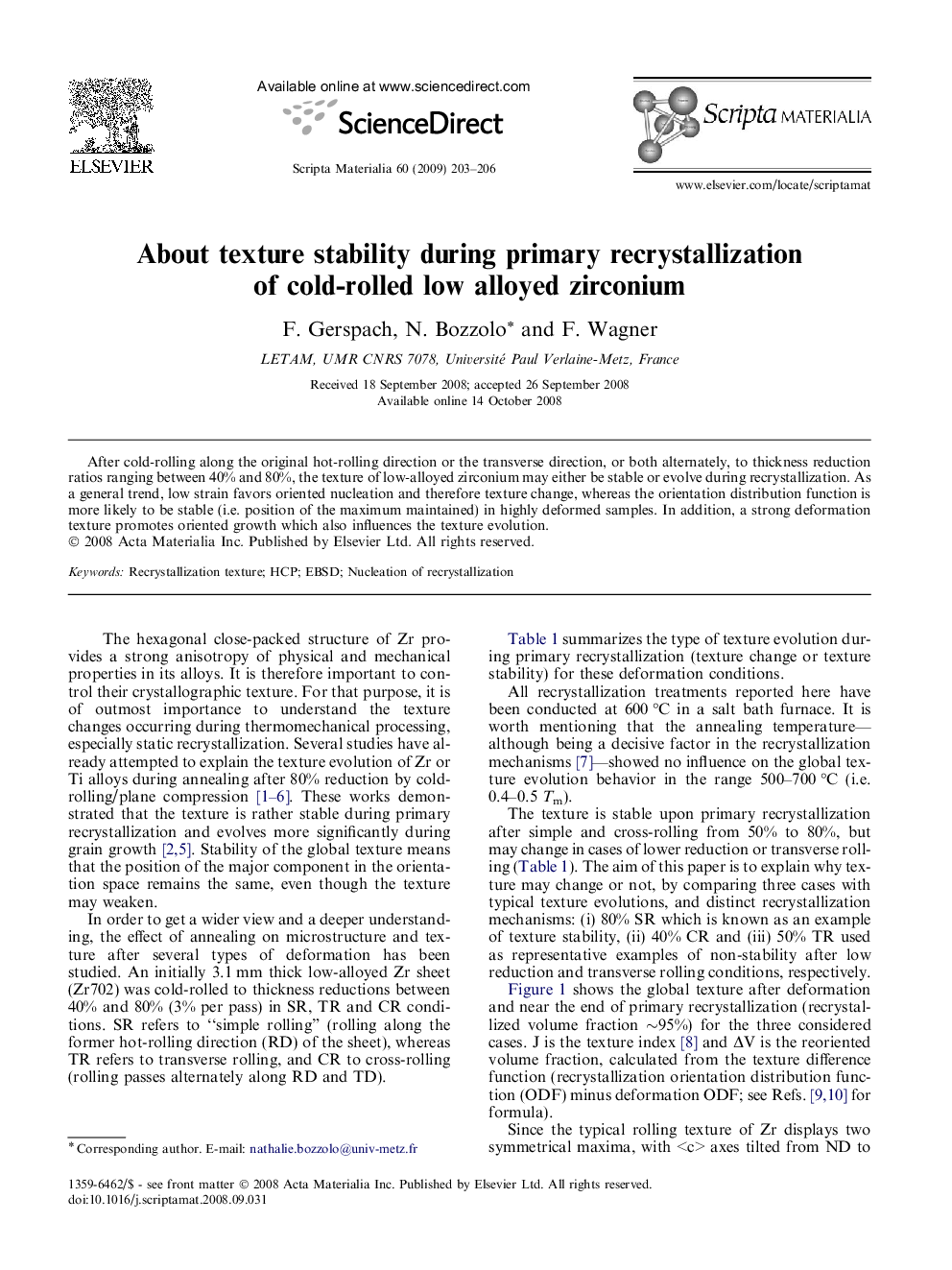| Article ID | Journal | Published Year | Pages | File Type |
|---|---|---|---|---|
| 1500681 | Scripta Materialia | 2009 | 4 Pages |
Abstract
After cold-rolling along the original hot-rolling direction or the transverse direction, or both alternately, to thickness reduction ratios ranging between 40% and 80%, the texture of low-alloyed zirconium may either be stable or evolve during recrystallization. As a general trend, low strain favors oriented nucleation and therefore texture change, whereas the orientation distribution function is more likely to be stable (i.e. position of the maximum maintained) in highly deformed samples. In addition, a strong deformation texture promotes oriented growth which also influences the texture evolution.
Related Topics
Physical Sciences and Engineering
Materials Science
Ceramics and Composites
Authors
F. Gerspach, N. Bozzolo, F. Wagner,
